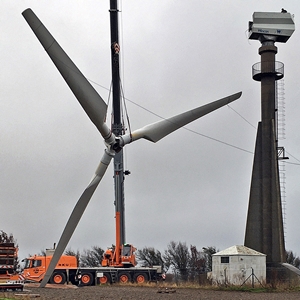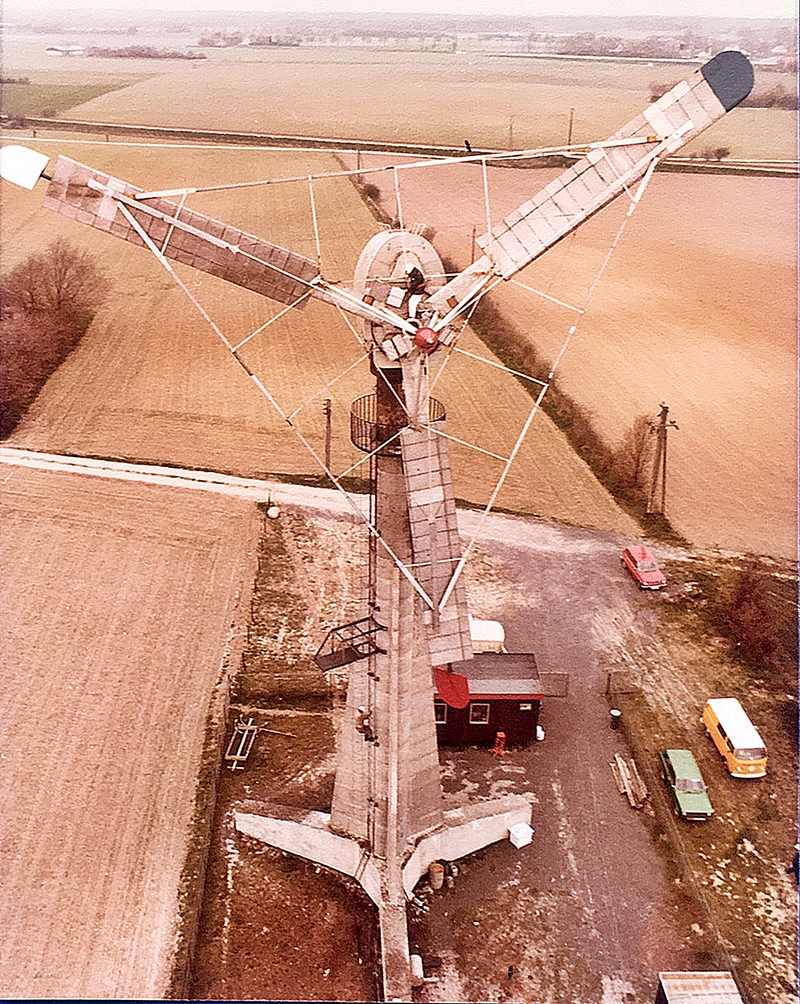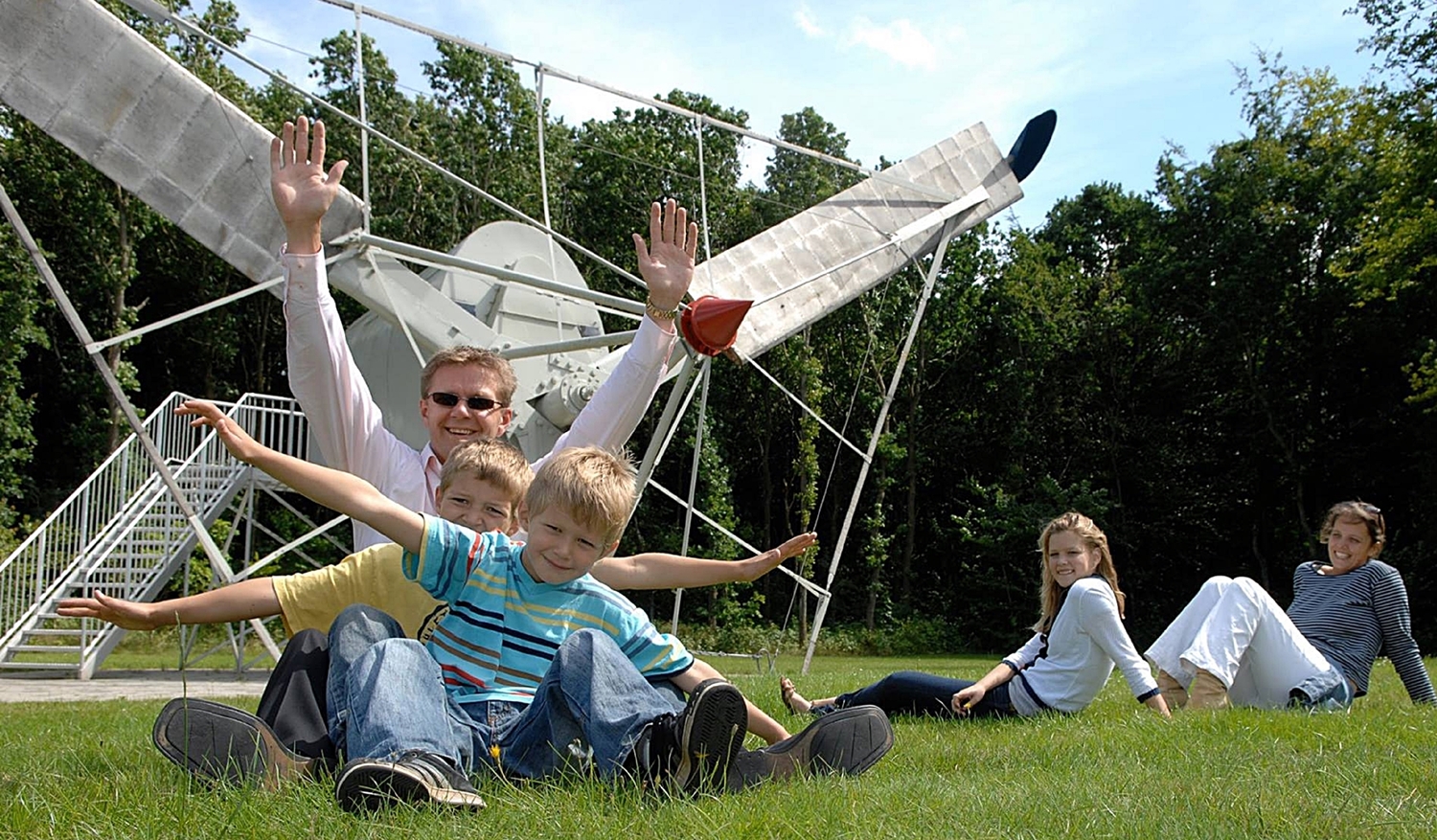The main purpose is to restart the iconic Gedser Wind Turbine. Also referred to as "Mother of All Modern Wind turbines" and "The Danish Concept".
Δ 1957, built, with support from the Marshall Plan, by engineer Johannes Juul in 1957 due to the post-war shortage of fossil fuels.
Δ 1977-79,restarted by NASA and DOE for the US energy program.
Δ 2024-25, planned restart for the global green transition program.
The drone photos have been provided by the German engineer Silvio Matysik during his visit in 2021. He plans to use the drone photos to produce a mini-model for
wind-turbine-models.com
|
|

|
Drone photo (above) shows Juul's Turbine Tower, Gedser Ginkgo Soundgarden featuring wind sculptures (based on recycled materials supplied by local citizens) and left: the landowner's private home and the existing museum in the renovated stable building.
|
|
3 February 2023, an application for a dispensation from the Beach Protection Line was send to the Danish Costal Agency. Respectively for an independent expanded cadastre for a renewed operation of the Gedser Wind Turbine, as well as for the establishment of the Juuls Museum.
The property, including the mill site, was purchased in 2014 by Gitte Ahrenkiel, who, at the request of local citizens, took the initiative to secure the mill site for posterity (a conservation application with the Danish Palaces and Culture Agency
has been dispatched). For this reason, the "Association: Operation of the Gedser Wind Turbine" was founded in 2020.
1 February 2024. Following an agreement with the Danish Coastal Directorate, a revised, updated application for exemption from the beach protection line has been forwarded. This is because the case processing has not yet started, and an update is therefore relevant and possible.
In the revised, updated application, the focus is on:
Δ that Juuls Museum and Gedser Wind Turbine obtain a dispensation for a joint independent cadastral register (extracted from the lot owner's 13g cadastral register).
Δ that Johannes Juul's Prototype installed on Juul's original tower gets a dispensation for renewed operation.
Δ that the Coastal Directorate grants a dispensation for the construction of the Juuls Museum (50 square meters)
Previous dispensing application for parking spaces - has been dropped.
The dispensations are significant for:
Δ
to secure Juul's historic mill tower for posterity. Such protection is optimally achieved by operating Johannes Juul's Prototype with the maintenance and the annual service visit required by the Danish Energy Agency.
Δ
to establish a locally founded Private Limited Company, which, with the support of the association and Guldborgsund Municipality, will be responsible for operation and ownership - hence the need for the mill and museum to have a unified, independent cadastre.
Δ
to convey and document the history of Juul and his inventions. Andel Elmuseet has 12 Sep. 2023 donated Juul's patented low voltage stove (1936) to Juul's Museum. On 19 April 2023, the Energy Fund granted support for the museum's planned exhibitions on sustainable energy technologies. In other words: Juul Museum has, despite the fact that it has not yet been built, confirmed its eligibility.
|

|
|

|
Building proposal for the Juuls Museum
|
The following has been prepared by the association member and engineer Lennard Johansen.
"Juul's Museum (50 square meters) aims for a year-round exhibition with two sections. One section presenting the story of the Gedser Wind Turbine, while the other offers perspective on today's sustainable energy technologies. The exhibition is created as posters with text and images hung on a central glass inner wall under the ridge of the roof. The building is constructed as a light structure with recycled wood and paper wool on a point foundation, and is heated to 5° C with an air-to-air heat pump powered by the nacelle. A wind trap is installed at the entrance.
The building is equipped with facade glass, so that visitors from the surrounding project area are invited to look out to the water side (west). Daylight entry into the exhibition area is provided primarily from skylights in the north-facing roof surface to minimize solar heat entry. Skylights are installed with openings to ventilate away solar heat."
|

|
Juul's tower and transformer house were in operation until 4 November, 2019
|
Juul's mill tower was in operation until November 4, 2019, after which a Wincon 200 kW (installed by the previous owner in 1993 and from 2014 operationally taken over by a wind turbine company) was removed with legal assistance.
 Press release, 3 December, 2020 Press release, 3 December, 2020
|
|
Renewed operation of Johannes Juul's prototype in sustainable materials
|

|
|
Private photo, 1993.
|
The Energy Museum maintains the exhibition of Juul's rotor (steel and wood) and machinhouse. Whereas the reconstruction project in Gedser is fulfilling Juul's request to the SEAS board in 1957, for rotorblades made of glass fibre (see quote below). However, the characteristic stays and wires are to be included in the recreated rotor. Likewise the coloring of air brakes in red, blue and white as well as the red snout. We are investigating the possibility of designing the blades in recycled fiberglass.
Quote: "When the blades were designed, it should be remebered that the possiblities of production were restricted, as they could only be made by manual power craftsmanship. In a possible future industrial production in series, these blades can undoubtedly be more cheaply made of pressed steel sheets welded into hollow shell-like constructions to be bolted to the hub by flanges. It is possible as well to make the blades of other material than steel, e.g. plastic reinforced with glass fibre, if this proves economically advantageous."
Source:
Johannes Juuls speech at the UN-Konferenz, Rom, 1961:
"Design of Wind Power Plants in Denmark"

|
|

|
Photo: Energy Museum
|
|
Museum inspector Jytte Thorndahl, Energy Museum, is a member of the association's project group.
In addition to the fiberglass rotor, Jytte Thorndahl also recommends equipping the copy of Juul's prototype with a modern gearbox ("there is plenty space in the machine housing"). Although the design must be similar to the original, it is important to adapt the operation to the extreme weather conditions of our time. Furthermore, Juul's prototype will be subject to applicable safety requirements and, like other wind turbines in Denmark, is already subject to an annual service visit by certified wind turbine companies.
Next in the website menu bar:
About the Association
and Sparring Partners
|
|
|